3D Printed Bagpipes
Fall 2022 : The Humble Beginnings
In the Fall of 2022, I poked my head into the Digital Knowledge Center at the University of Mary Washington for the first time. I was interested in learning more about 3D Printing, and I was able to train on the printers with the center’s consultants.
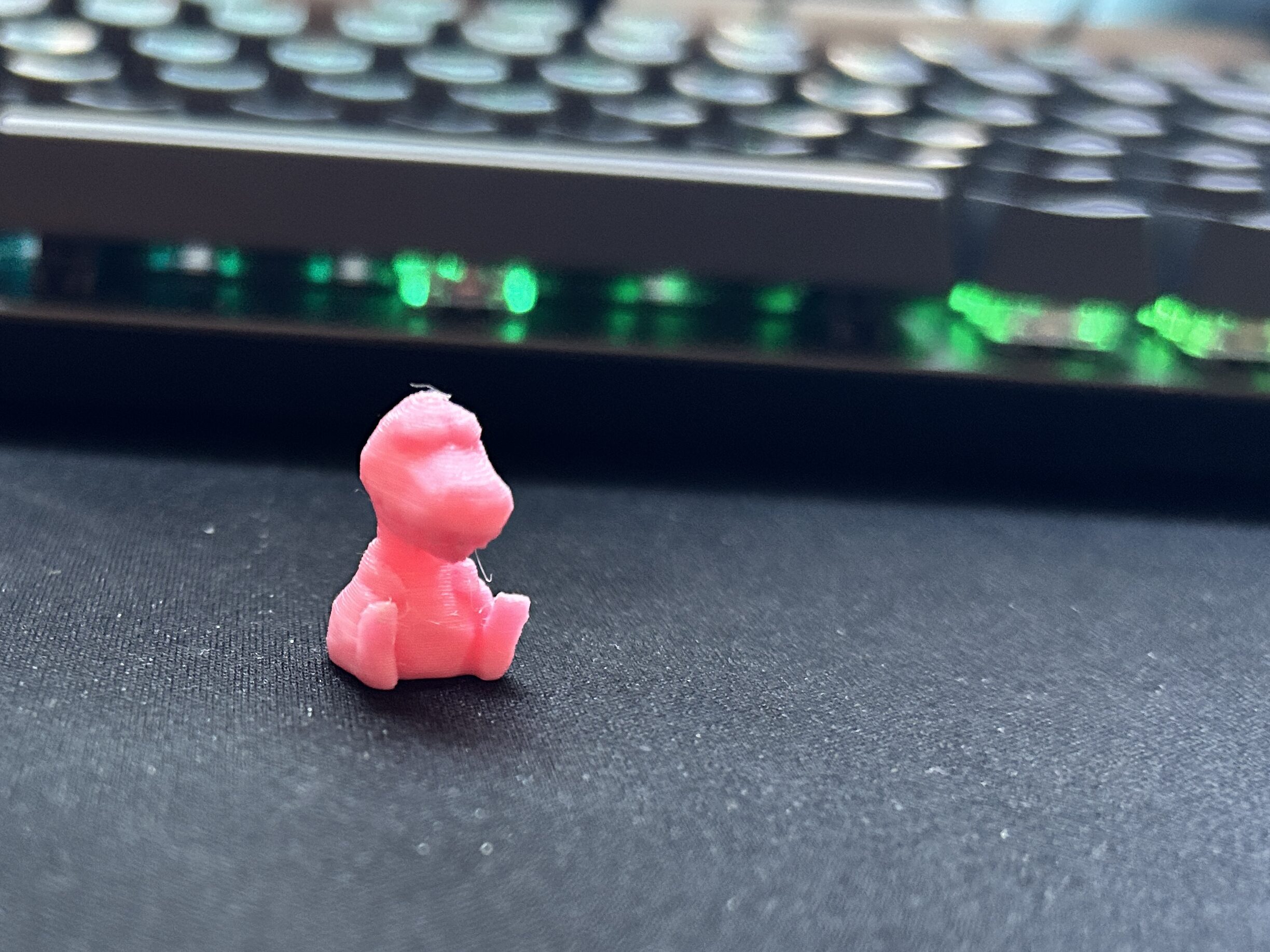
The first print: the Digital Knowledge Center Dinosaur
Soon after, I was in the DKC often, printing figurines, toys, and the like.
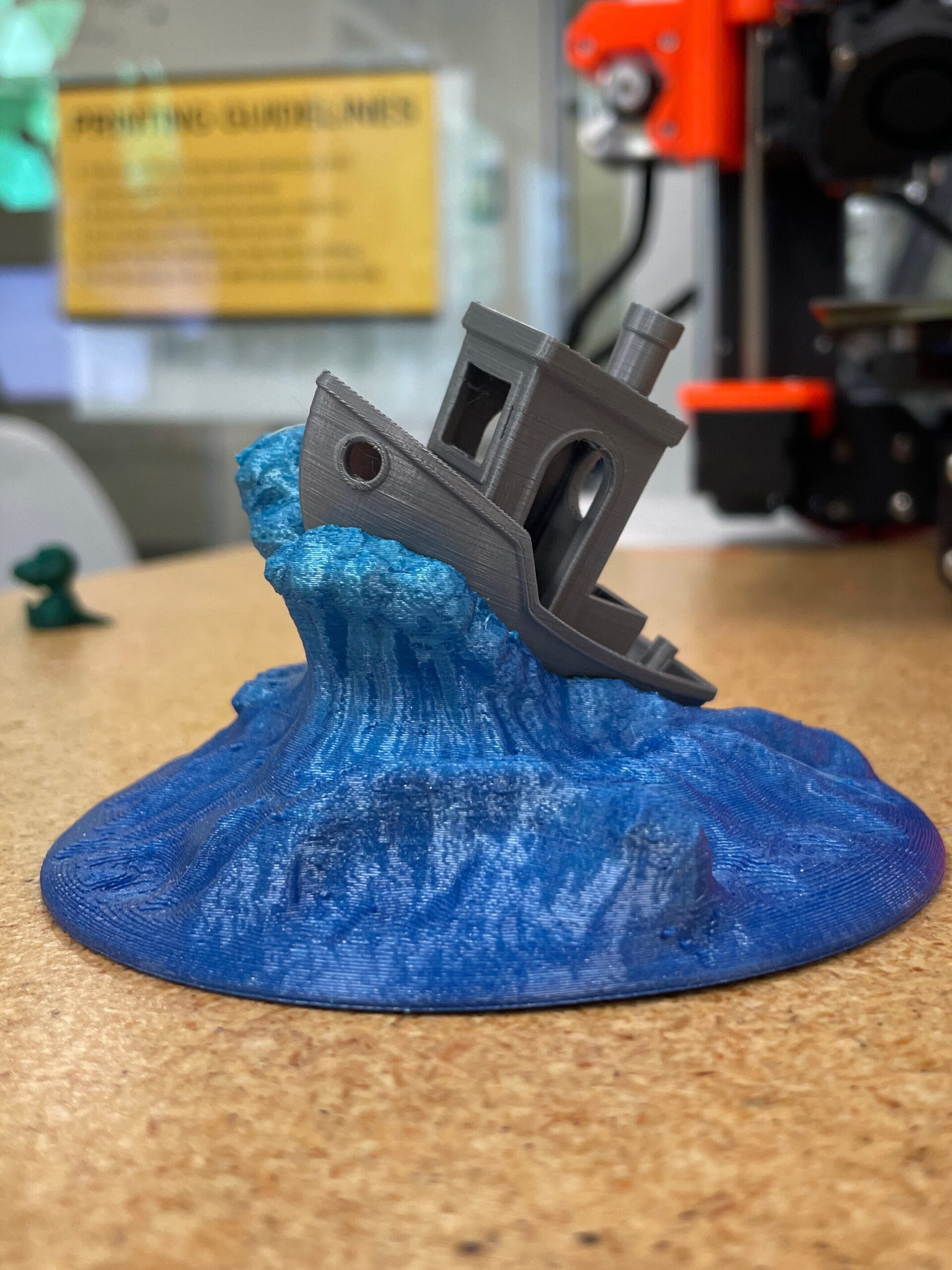
Now, flashback to 2016- I’m 13 years old, living in Bethlehem, PA. I just graduated from Nitschmann Middle School, and I’m headed for Liberty High School, and the Grenadier Band. I’ve been playing the trumpet since fourth grade, and I’ve sort of fallen out of love with it.

And so I pick up the bagpipes, and begin my stint with the Liberty High School Pipes and Drums. I’m playing at our football games, parades, and other gigs, like weddings, funerals, and such.
Alongside the grenadier band, I travel to Hawaii in 2016, Hollywood, CA in 2019, and play on stage with groups like The Piano Guys and the Red Hot Chilli Pipers. (Not to be confused with the Chili Peppers)
I then graduate from Liberty High School in 2020, and move down to Fredericksburg, VA to continue playing pipes at the University of Mary Washington.

Now, back in the Fall of 2022, I’m wondering how I can combine my passion for the pipes, and this newfound interest in 3D printing.
I started simple: bagpipes begin learning on this smaller instrument called the practice chanter, and that’s what I wanted to print.
The directors of the DKC, Cartland Berge and Shannon Hauser, both took interest in this idea, and we started to do some research. We were able to find a model of a practice chanter on Thingiverse.com, made by user Kakadu.Long Practice Chanter by Kakadu (need to link this https://www.thingiverse.com/thing:1121001): 3D Printed Bagpipes
However, in order for the chanter to fit on most standard printers, Kakadu needed to make the chanter modular, so that the pieces can snap together once taken off the printer.
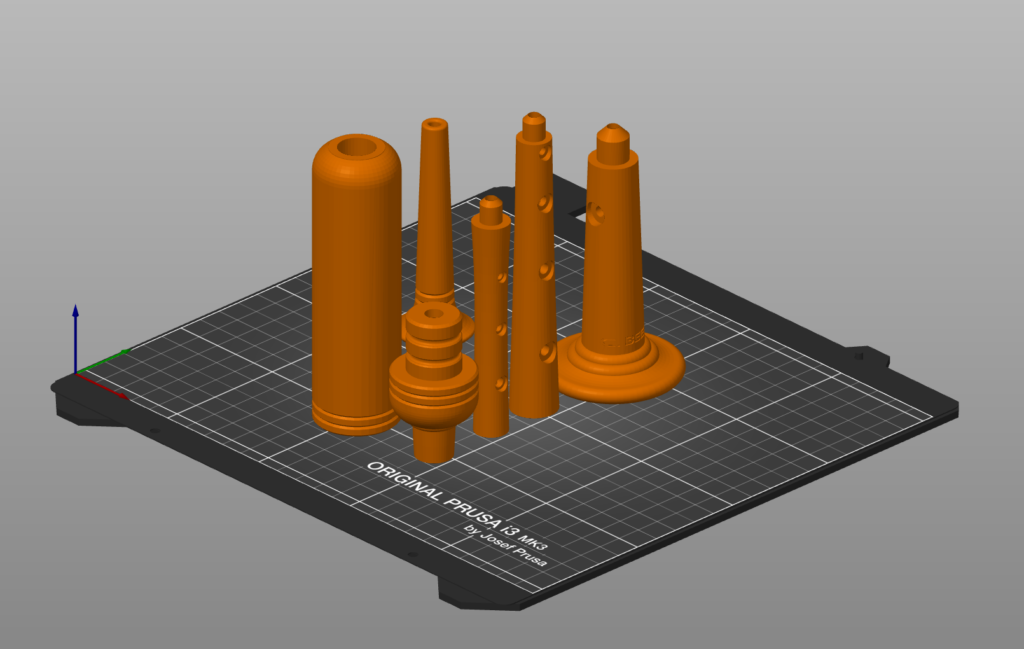
Kakadu’s modular practice chanter in PrusaSlicer
I was ecstatic that a design like this existed, so I immediately began printing and assembling these chanters, testing out some different print settings. It worked really well, and sounded a bit more resonant than the practice chanter I’d been playing for years, which I really liked.
I brought the chanter to a couple of rehearsals with the UMW Eagle Pipe Band, and the other bagpipers were curious about the process; this was the moment I knew that I could make this more than a hobby.
With the training I received from the DKC consultants, I used TinkerCAD, an online 3D modeling program, to etch the words “UMW Eagle Pipe Band” into the side of Kakadu’s chanter. With the praise I received from the pipe band, and a new purpose, I set off on my expedition to provide the Eagle Pipe Band with new practice chanters.
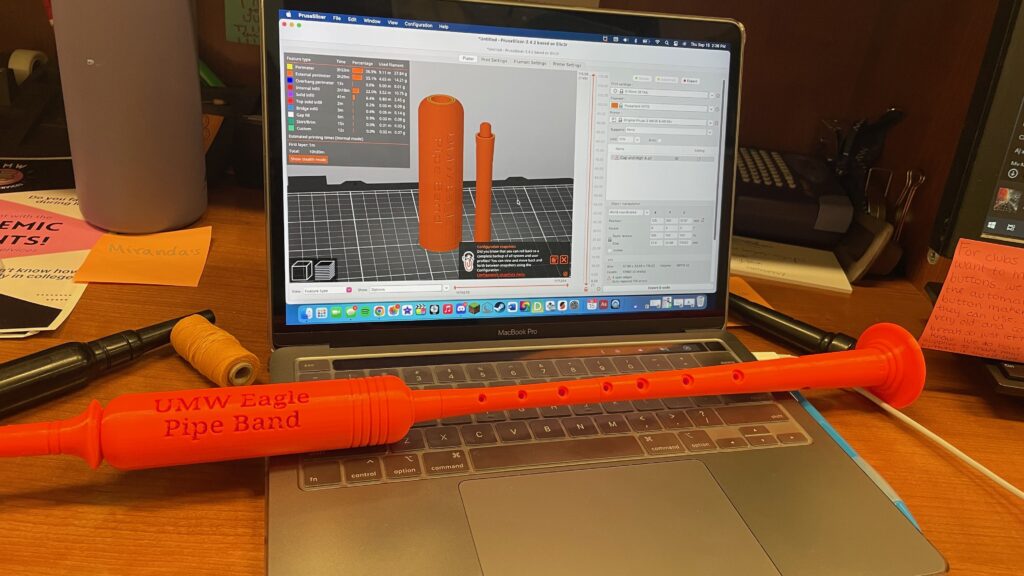
I’ve always found it difficult to commit to personal projects, as I tend to get bored of things quickly, but this felt different! It felt new! I wanted to dedicate myself to providing the best possible chanters that I could for the Eagle Pipe Band, and I wasn’t totally satisfied with Kakadu’s model. It sounded great, but the modular design made for a flimsy, unsatisfying playing experience.
I had never truly 3D-modeled before, but I knew that designing my own chanter was the next step.
I often think back to my time at Liberty High School. The bagpipers didn’t have a formal instructor, and more often than not, we were left on our own with upperclassmen teaching underclassmen. This also meant that we weren’t being watched over by the band directors, and that often got us into a bit of trouble- students throwing their chanters around, claiming they’re indestructible. We did lose a few chanters to those shenanigans, but for the most part, your typical, run-of-the-mill, injection-molded chanter was pretty darn durable.
This was my goal! I wanted to make a chanter that felt comfortable and robust, and so I turned my attention toward the practice chanter I had been playing since eight grade.
I started my modeling journey by researching a few popular practice chanters, and took some measurements from the Gibson Practice Chanter that I’ve been playing since 2016.
I reached out to a friend, who had purchased a printer to print masks during the pandemic, and asked if he had any recommendations for 3D modeling software.
He recommended Onshape!
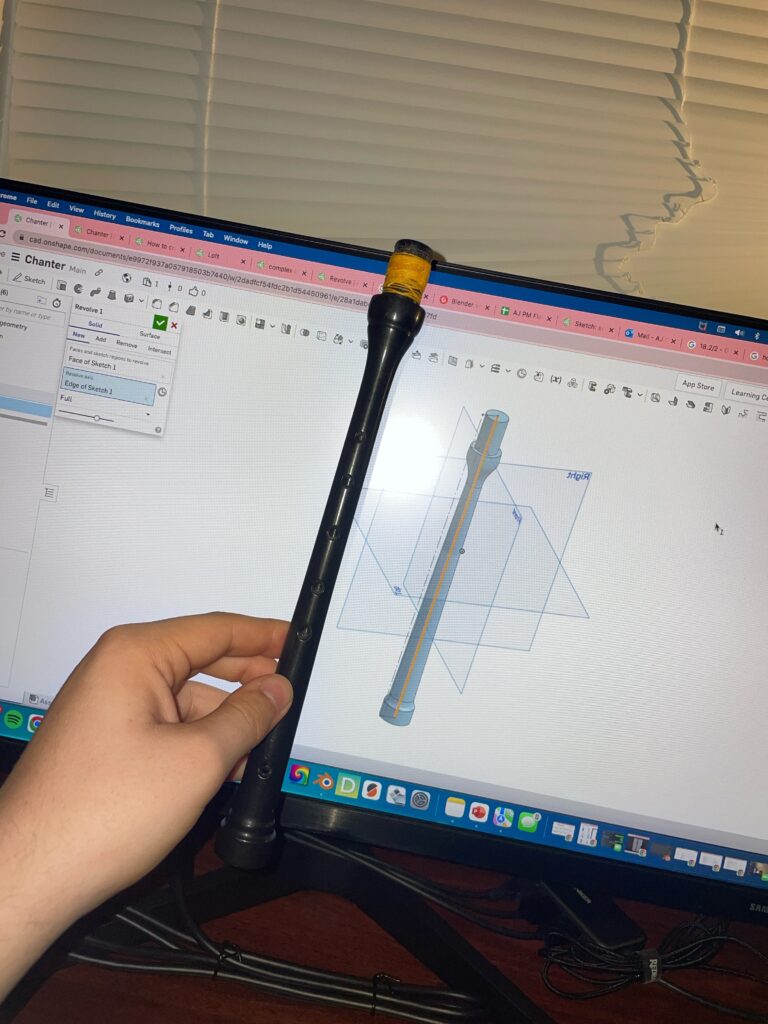
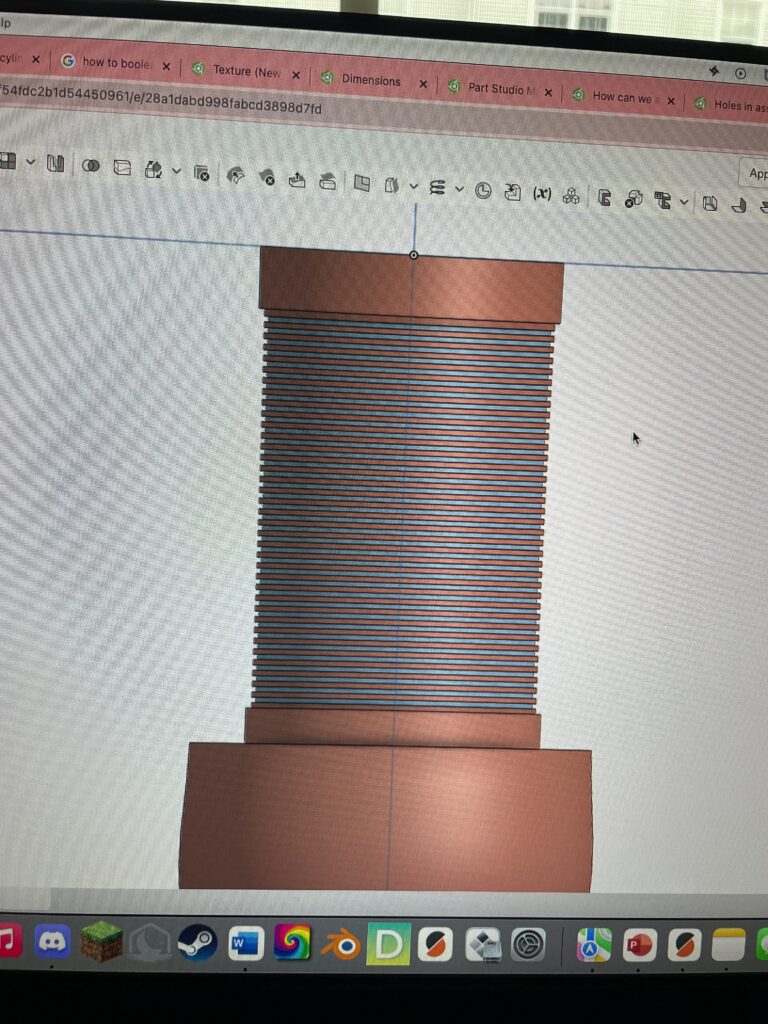

After a few YouTube tutorials, and some trial and error, had something that loosely resembled the bottom half of a practice chanter.
From there, it was a lot of copying, pasting, and some minor adjustments to get the holes just right.
One of the first problems that I ran into was with the size of the PRUSA printers we have, as the chanter was too tall to print upright. I took some inspiration from Kakadu’s modular chanter, and split it in two so that it could fit.
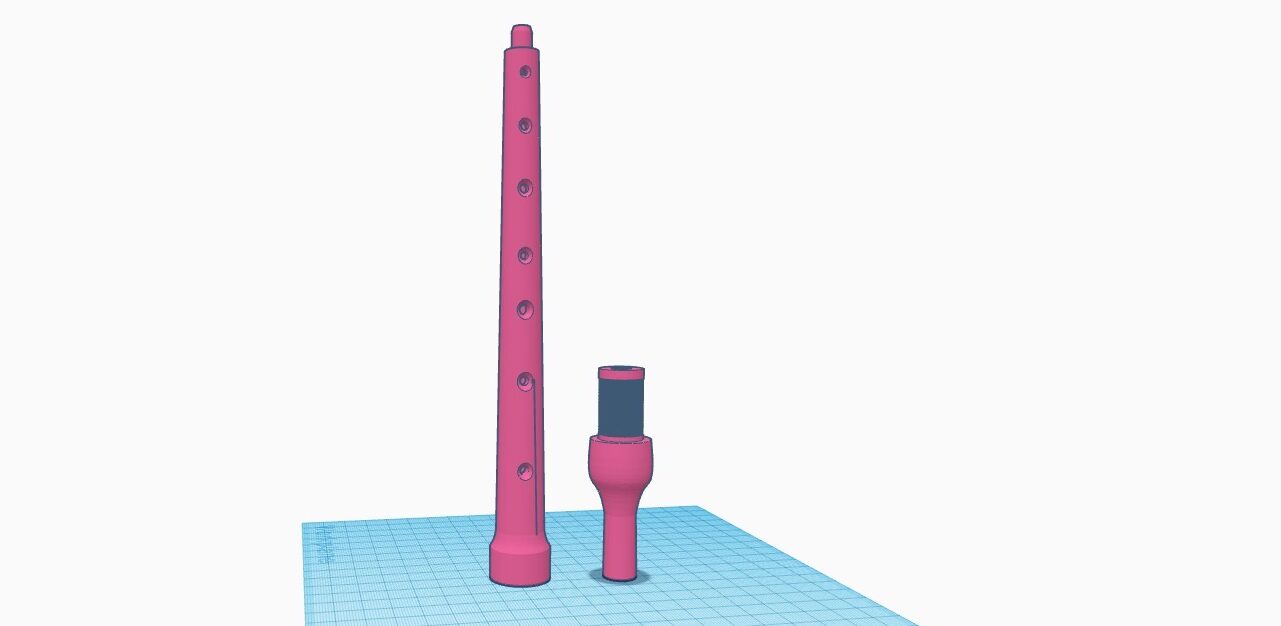
The second problem I faced was with the joint. It was incredibly weak and snapped with the slightest bit of roughhousing, which I sort of expected.
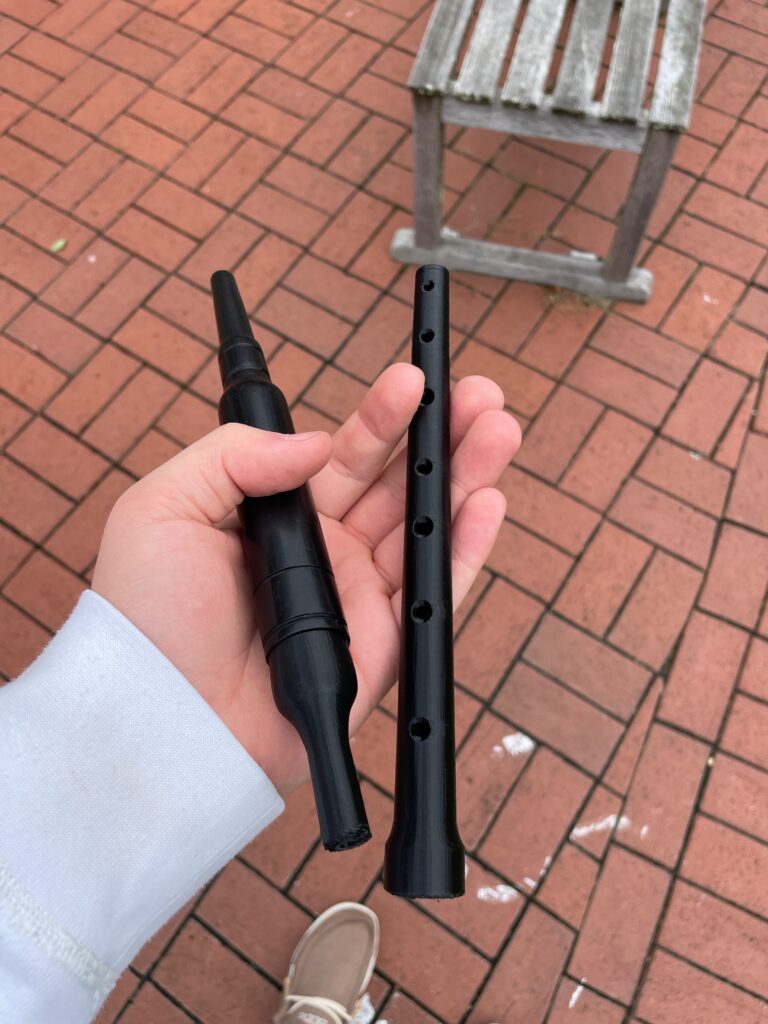
I modeled up a few different iterations of the joint, as per Cartland’s suggestion, printed them out, and tested how much force it would take to snap them. It was a rather primitive test, using two pairs of pliers, and going with my gut in regard to which iterations felt the strongest.
Even after swapping out the joint and printing another test, it still felt flimsy, and I resorted to duct tape to hold it together in the meantime.

I took a bit of time to ponder how I could backtrack and try something else. Mind you, this is the first time I had needed to problem-solve a 3D printing project- I was brand new to this.
In this time, I modeled up the chanter cap, which was significantly easier than the bottom, now having a month or so worth of Onshape under my belt.
Back to the bottom of the chanter: I thought about what glue I could use, or how I could heat up the joint to reinforce the connection, but I was worried how that would affect the anatomy of the chanter.
Then I started to think in terms of the printer, and the print settings, instead of the instrument, and it hit me (later than I’d prefer to admit).
I needed to lay the chanter down on its side; the full chanter would fit diagonally (with no joint) across the build plate, AND the layers would run parallel to the length of the chanter, which would heighten the durability.
I got to work immediately!

These first few horizontal chanters were a riveting success, but I was unsatisfied with how the supports roughed up one side of the chanter, and I got quite familiar with sandpaper, an x-acto knife, and the heat gun.
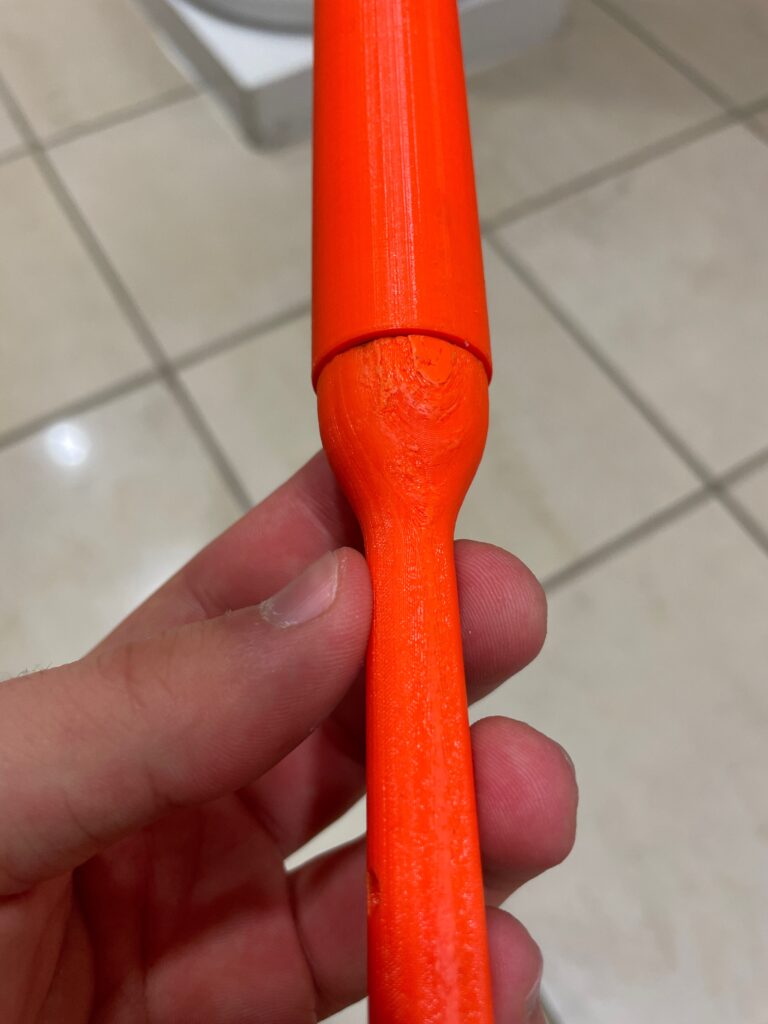
After a good bit of post-processing, I got the chanters down to a clean enough finish, and showed them off to the members of the UMW Eagle Pipe Band
The band was impressed, and wanted a few chanters for the pipers in the band. The pipe band provided some funding for filament, and I purchased Prusament’s PETG in blue, gray, and “clear” to stick with UMW colors! I also used TinkerCAD to etch “UMW Eagle Pipe Band” into the new chanter cap.

And that’s the story so far! I spent the last few weeks of Fall 2022 printing chanters for the members of the Eagle Pipe Band, and working to find other ways to ensure cleaner support removal.
Now, we begin the big project: 3D printed bagpipes.

This is inspiring! I hope you’re continuing to innovate with bagpipe prints! If you’re taking ideas, I’ve always thought to 3D print a practice chanter that has the outside dimensions of a full-size real chanter (including actual-sized counter sunk holes) . I’ve always found it frustrating that we spend 90% of our time on the PC which doesn’t fully mimic the real instrument. As a result, I find myself looking at the process you went through-learning to 3d model then print trails. Kudos if you beat me to it! Cheers!
Thank you so much for your comment- this is a fantastic idea. I totally agree, I think a full size pipe practice chanter sounds like a fun challenge! I’ve noted this down in my project list! 🙂